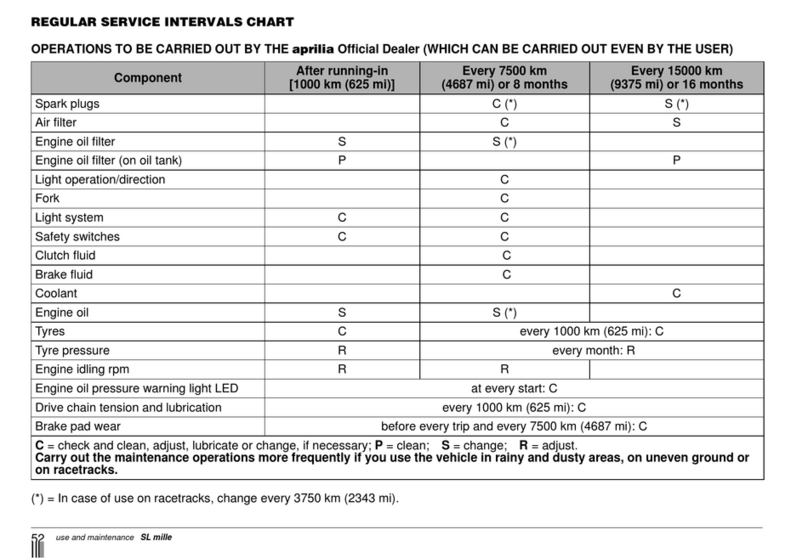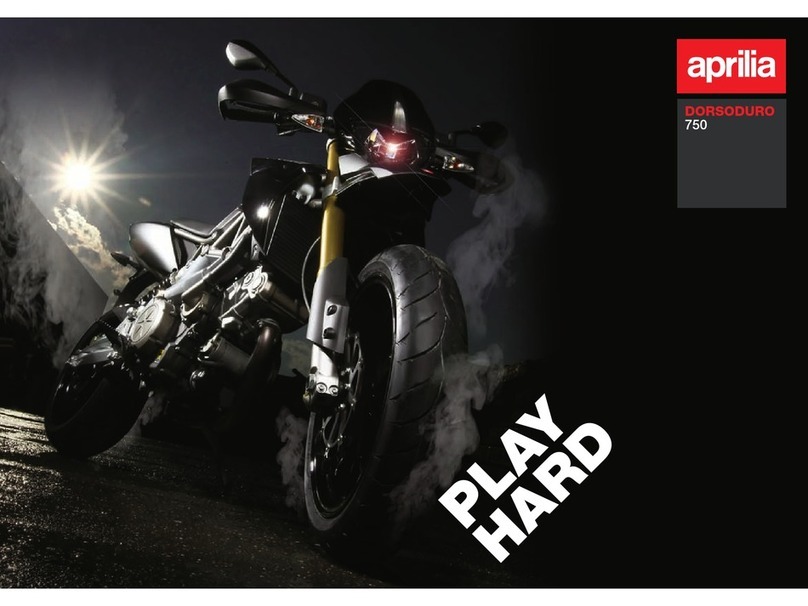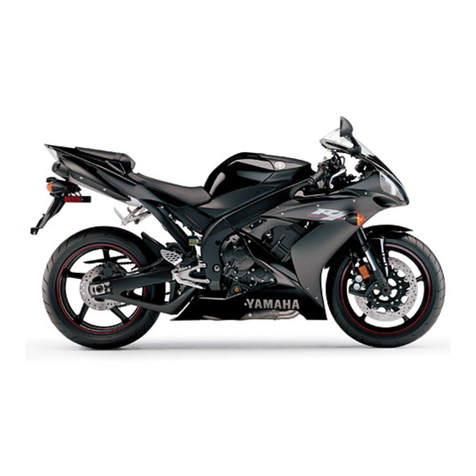APRILIA RX 50 - 2001 User manual
Other APRILIA Motorcycle manuals

APRILIA
APRILIA RXV 450 - 04-2007 User manual
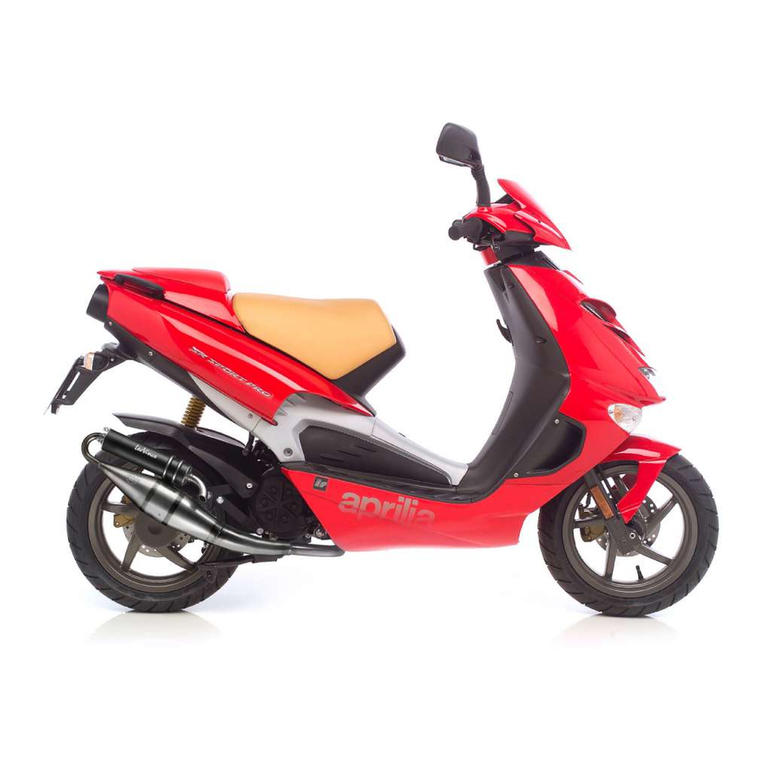
APRILIA
APRILIA SR 50 - 2003 User manual
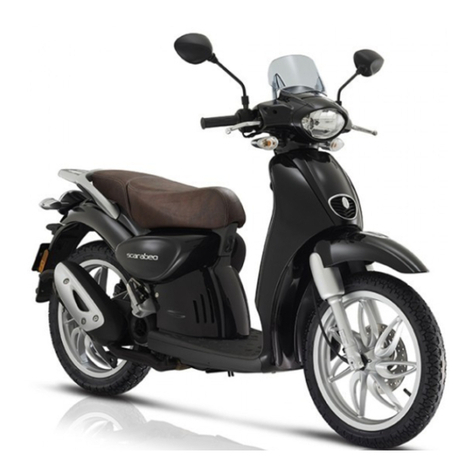
APRILIA
APRILIA SCARABEO 50 2T - 2006 User manual
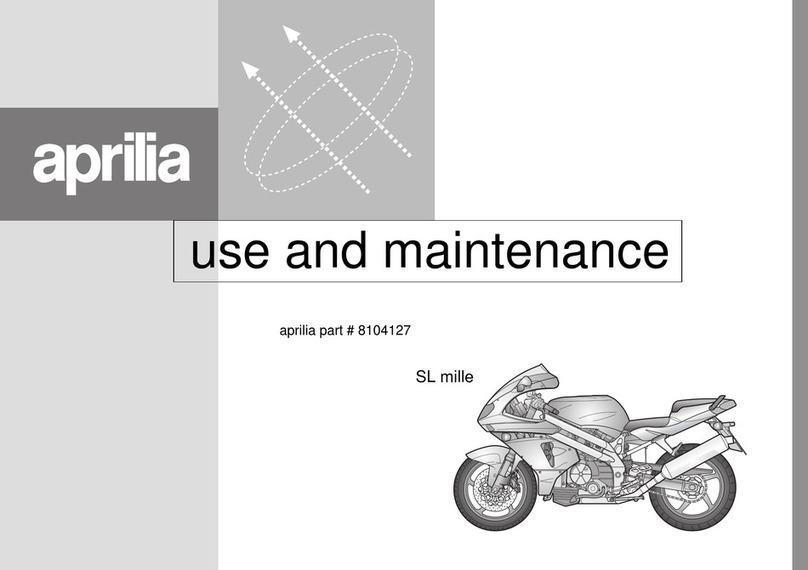
APRILIA
APRILIA RSV MILLE - PART 1 1999 User manual
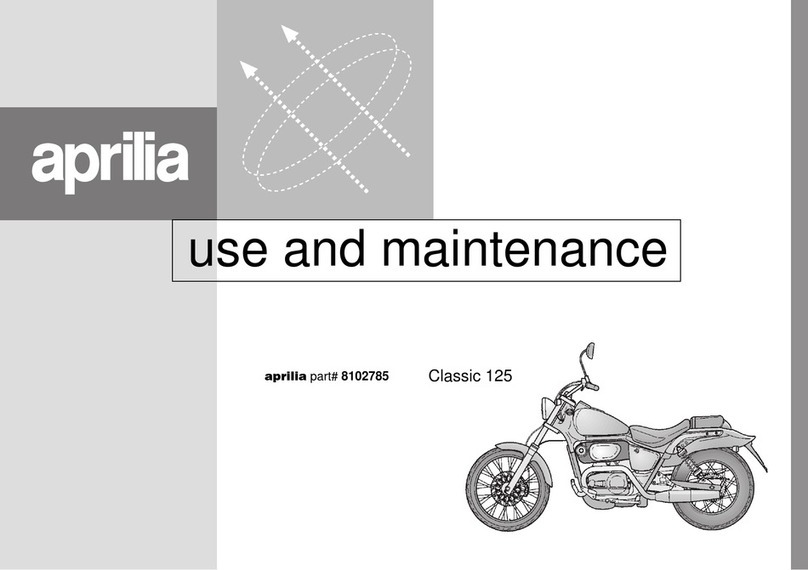
APRILIA
APRILIA CLASSIC 125 - 1997 User manual
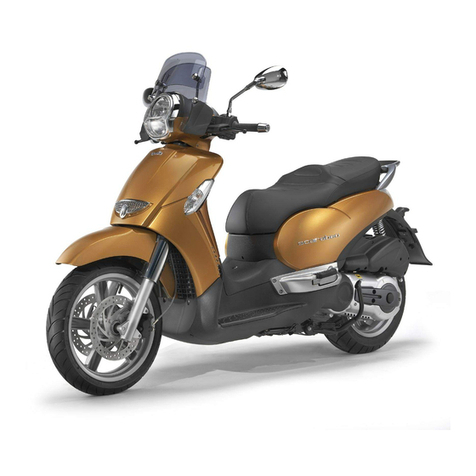
APRILIA
APRILIA SCARABEO 500 - 2006 User manual
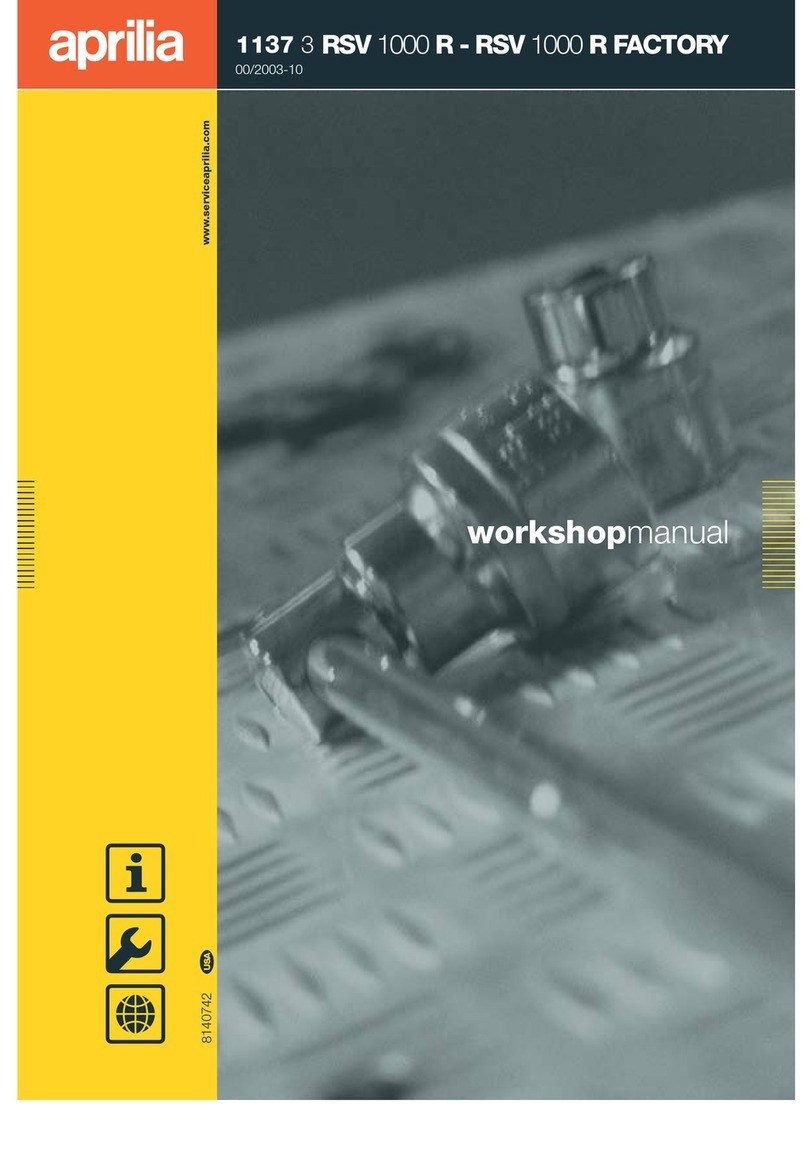
APRILIA
APRILIA RSV 1000 R FACTORY 2003 Instruction manual
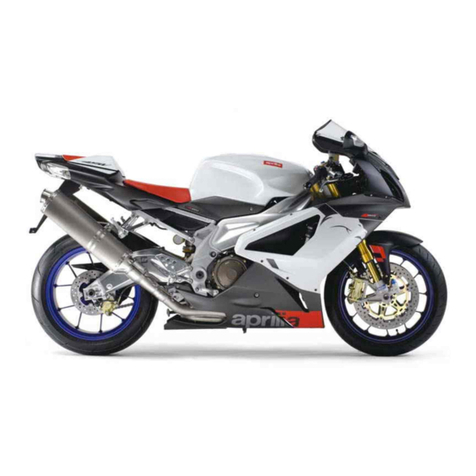
APRILIA
APRILIA RSV 1000 R User manual
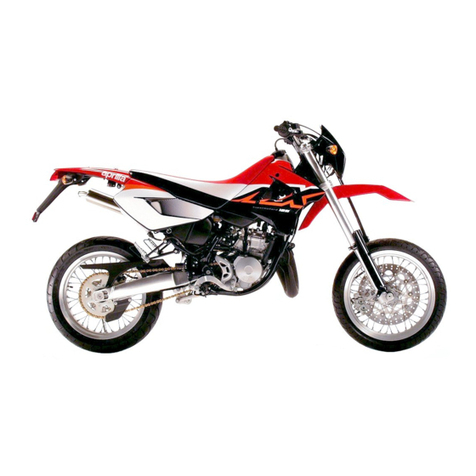
APRILIA
APRILIA MX 125 - ED02 2004 User manual
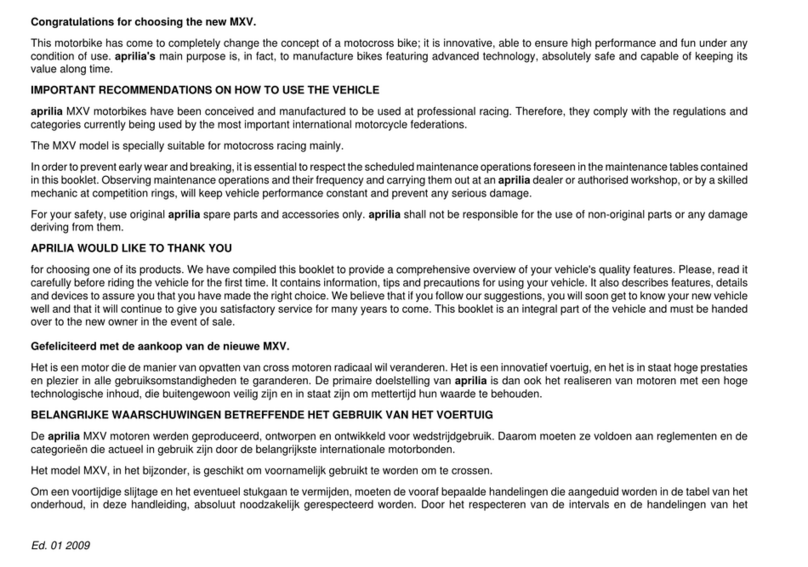
APRILIA
APRILIA 2010 MXV 450 User manual
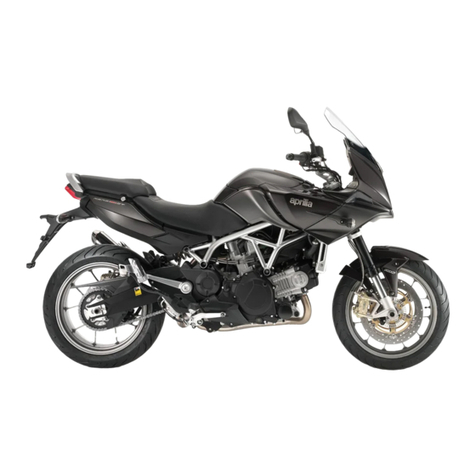
APRILIA
APRILIA MANA GT ABS - 2009 User manual
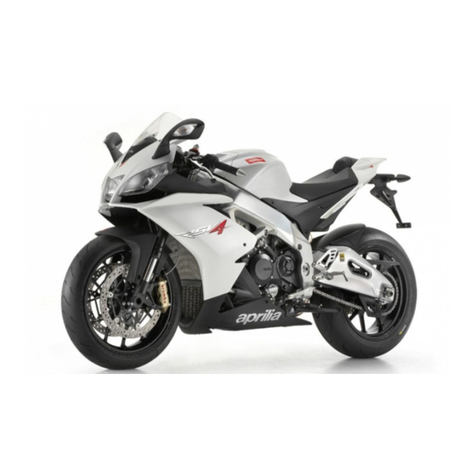
APRILIA
APRILIA RSV4 R Guide
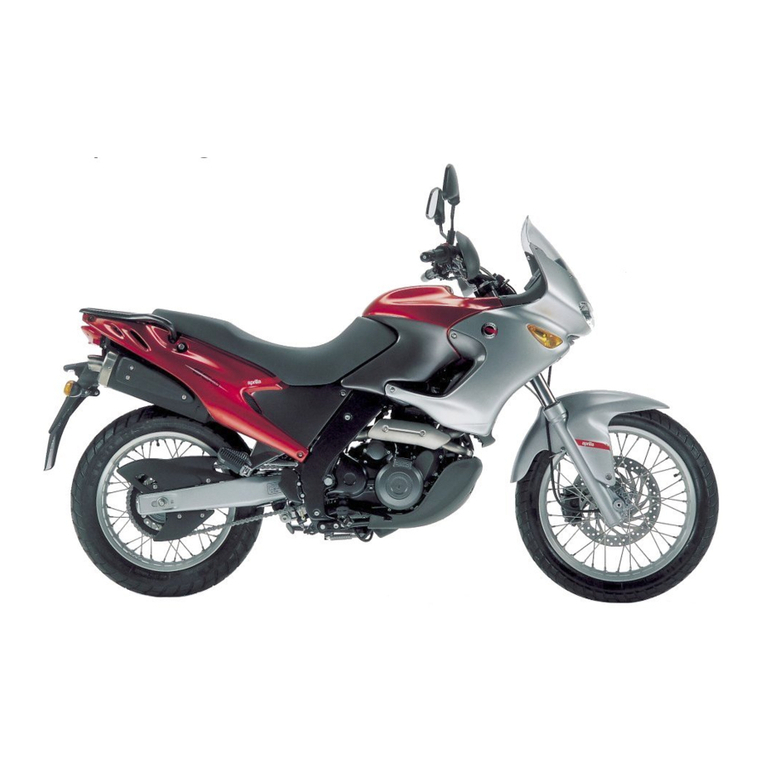
APRILIA
APRILIA PEGASO 650 IE - 2003 User manual
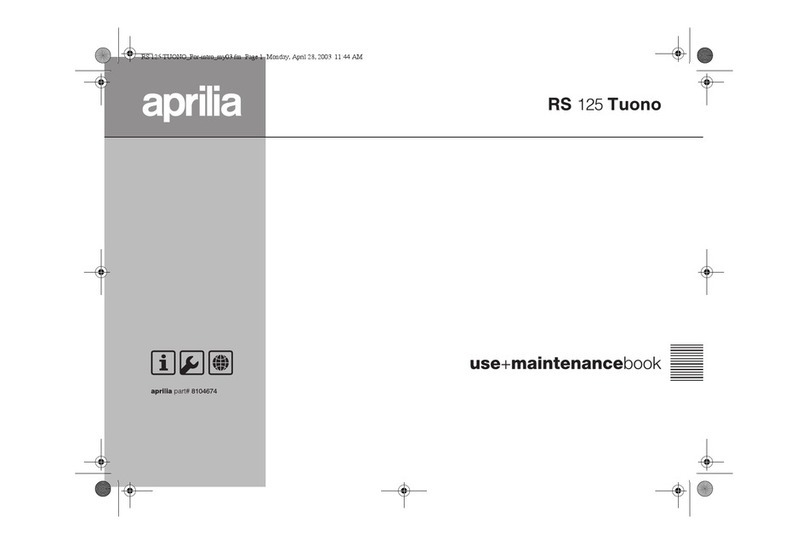
APRILIA
APRILIA RS 125 TUONO - 2003 User manual

APRILIA
APRILIA ETV MILLE CAPONORD - 2003 User manual
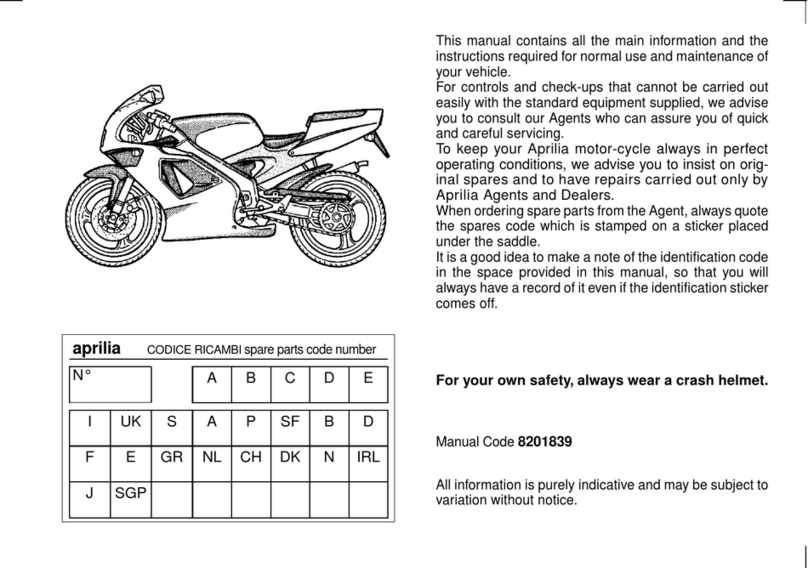
APRILIA
APRILIA AM5 H2O AUTOMIX User manual
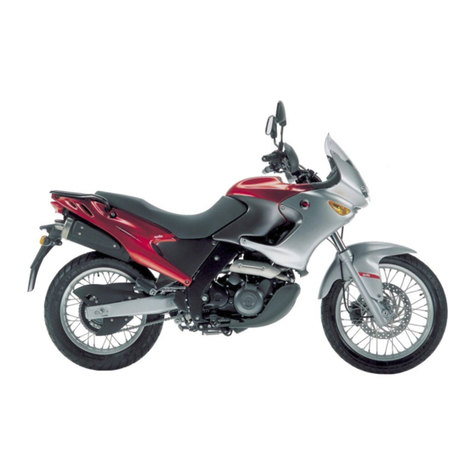
APRILIA
APRILIA PEGASO 650 IE - PART1 01-2001 Parts list manual
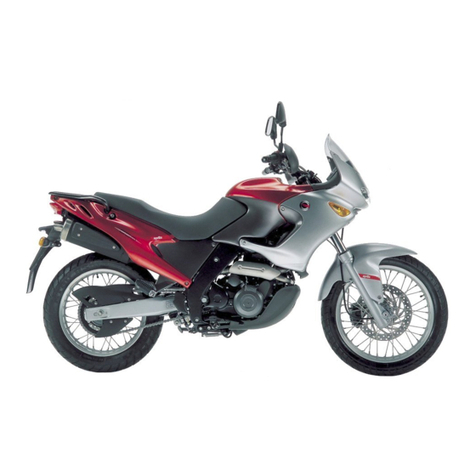
APRILIA
APRILIA Pegaso 650 I.E. Parts list manual

APRILIA
APRILIA SCARABEO 500 User manual

APRILIA
APRILIA NA 850 MANA - 03-2008 User manual
